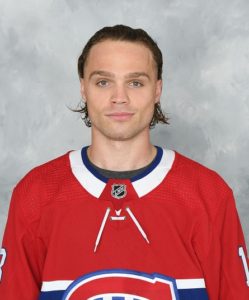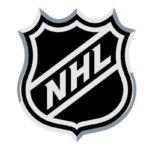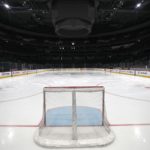NHL Morning Coffee Headlines – July 8, 2020
NHL Morning Coffee Headlines – July 8, 2020
NHLPA executive board approves tentative CBA, three games per day are planned for the playoff tournament, and more in today’s NHL morning coffee headlines.
LATEST CBA AND RETURN-TO-PLAY NEWS
NHLPA: announced its executive board (which includes the 31 player representatives) approved the tentative extension to the collective bargaining agreement. It moves today to a ratification vote by the full PA membership. The results will be announced on Friday, July, 10.
SPECTOR’S NOTE: The CBA extension is packaged with the return-to-play plan that requires the approval of the players and the NHL board of governors. A simple majority by the PA membership is needed to approve the CBA extension. Despite recent reports suggesting some players weren’t happy with the process of negotiations, this package is expected to be approved.
No word yet when the board of governors will vote. That will require a two-thirds majority but it is also expected to sail through.
TSN: Bob McKenzie reports the return-to-play plan will see three games a day in both Edmonton and Toronto with local start times at noon, 4 pm and 8 pm. Given the two-hour time difference between those cities, it means six games spread over 15 hours per day, perhaps longer if games go into overtime.
SPECTOR’S NOTE: Talk about hockey overdose! My wife is telling me to enjoy the rest of this month because she knows she won’t see much of me in August and September. That’s assuming COVID-19 doesn’t derail the planned tournament.
The seeding games involving the top-four clubs in each conference during the qualifying round won’t go into unlimited overtime to decide a winner. They’ll instead follow the regular season rules of a brief overtime period followed by a shootout if necessary.
SPECTOR’S NOTE: The 16 teams involved in the qualifying round will be under playoff overtime rules.

Will players with pre-existing medical conditions, like Montreal’s Max Domi, be prevented from skating in the upcoming playoff tournament? (Photo via NHL Images)
McKenzie also reports the league has the power to deem players unfit to play if they think there’s a higher risk of that player becoming extremely ill if they contract COVID-19. He cites Montreal Canadiens’ center Max Domi and New York Rangers winger Kaapo Kakko as examples. Both are type 1 diabetics with celiac disease. To the best of McKenzie’s knowledge, Domi and Kakko intend to play, but doctors will have to sign off on that first.
THE NEWS & OBSERVER: Carolina Hurricanes winger Justin Williams has concerns over the coronavirus, but he’s still keen to contend for the Stanley Cup. “I didn’t come back to play 20 games,” said Williams during a video media call. “I came back for a chance to win the Stanley Cup.”
Williams also stressed the need for the players to take responsibility to reduce the risk of contracting COVID-19.
“You need to tighten up the bubble of people you’re hanging out with,” Williams said. “You need make your inner circle is pretty darn small because what you do affects everybody else.
“That’s pretty much the basis of what a team is anyway. You’re only as strong as your weakest link, but at this point your weakest link can take down your whole team.”
SPECTOR’S NOTE: That’s probably going to be the approach for all the teams throughout Phase 3. Despite the increase in detection, disinfection, and social-distancing protocols during the phase, the players will still be at risk because they’re still living at home, traveling to and from their team arenas and training facilities, and still in contact with the general public.
PITTSBURGH TRIBUNE-REVIEW: Seth Rorabaugh provides further details about the league’s protocols for Phases 3 and 4.
Some of the noteworthy Phase 3 rules include the independent media being allowed at team facilities but prohibited from direct contact with the players, the players being discouraged from socializing with one another outside team facilities, and tighter restrictions on commonly-used items and food.
In Phase 4, everyone must use league-provided and approved transportation with the secure zone. There are detailed guidelines on the use of masks and face coverings, and a limited number of media allowed access to the games, with interviews conducted remotely. Speaking of the media…
CBC: Broadcasters and print journalists still have questions over how they’re going to cover the playoff tournament in the two host cities. Rob Corte, VP of Sportsnet and NHL Production, said those details have yet to be finalized. Frank Seravalli, president of the Professional Hockey Writers Association, said the situation remains in flux.
It’s believed the broadcasts will be handled like the Olympics, with only cameramen, technicians, and production staff allowed inside the bubble while commentators call the games elsewhere from a live feed.
SPECTOR’S NOTE: The media won’t have the usual access during these two phases that they enjoy in normal situations. It will be challenging to provide the usual in-depth coverage. The teams might prefer the absence of media intrusion, especially during and immediately following the games.
ESPN.COM: Rene Fasel, president of the International Ice Hockey Federation, doesn’t expect any hurdles in negotiations with the league regarding its intention to return to the Winter Olympics. Issues such as health insurance, travel costs, and marketing rights must be worked out before NHL players can participate.
SPECTOR’S NOTE: The IIHF desperately wanted the NHL to take part in the 2018 Winter Games, even offering to pick up the tab for travel, insurance, and so on.
IN OTHER NEWS…
CHICAGO SUN-TIMES: The Blackhawks released a statement indicating they intend to keep their name and logo but are committed to raising the bar even higher in their efforts to increase awareness of Native American culture. The statement comes amid discussions by the NFL’s Washington Redskins and MLB’s Cleveland Indians about changing their names.
TSN: The NHLPA will be in court today attempting to dismiss a lawsuit by a former employee alleging the cover-up of more than $100K from union funds by one of its executives between 2008 and 2019.


